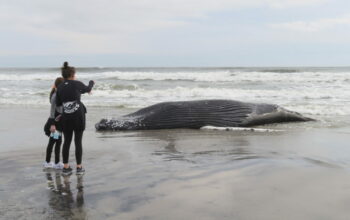The Endangered Species Act (ESA) turned 50 years old on Thursday, but it appears that the Act has largely failed in its primary objectives, according to recent analyses of government data by researchers at the Property and Environment Research Center (PERC). The ESA is the backbone of the federal government’s conservation efforts—overseen and enforced by the U.S. Fish and Wildlife Service (USFWS)—to protect and conserve endangered or threatened species. Although the Act aims to save species from extinction and to help them recover, the USFWS data show an enormous disparity between the Act’s impact on extinction rates and its ability to help species recover.
Over the years, just 3% of species under the Act’s protection have recovered, while the remaining species are still struggling to survive, according to a social media post marking the ESA’s 50th anniversary by PERC vice president of research, Shawn Regan. Regan also highlighted that the ESA has an impressive 99% record at keeping species from becoming extinct. Despite this, it is clear that the ESA has failed in its “ultimate goal” to help species reach a point where the Act’s protections are no longer needed. Of the 1,732 domestic species listed under the act, only 57 species (3%) have been able to recover, which Regan deems “not good news.”
However, it seems that some species may be doing better than others. Species like the humpback whale—protected under the Act 50 years ago—have significantly recovered, with populations increasing by approximately 80%, thanks to decades-long conservation efforts. Meanwhile, other species, such as the marbled murrelet, received protection in the 1990s under the Act and are still struggling, with their populations declining by over 4% annually.
Experts suggest various reasons for the failure of the ESA, including inadequate funding, political interference, and difficulties posed by climate change. Furthermore, the process of listing species as endangered is long and expensive, which can create further obstacles in the protection and recovery of species. Additionally, critics of the Act argue that it puts private landowners and their livelihoods at risk, damaging the economy and preventing people from using their private property for commercial gain.
The criticism of the ESA’s efficacy could not come at a worse time, as some species face unprecedented threats of extinction. Recent estimates suggest that one million species could face extinction in the next few decades due to climate change, unsustainable farming, logging, and poaching. Additionally, the COVID-19 pandemic has reportedly created further challenges for conservation work around the globe.
Turning 50 is a significant milestone for the ESA, but it’s clear that there are still significant roadblocks in achieving its goals. Without significant improvements to the Act’s implementation and effectiveness, many of our planet’s most vulnerable species may continue to struggle and ultimately face extinction.
While the ESA can boast of its impressive track record of keeping species from extinction, its failure to help species recover has raised concerns about the efficacy and practicality of the Act. As many species face unprecedented threats to their survival, it is vital to address the challenges posed by climate change, inadequate funding, political interference, and difficulties in listing species as endangered. Otherwise, there is a risk that many species may ultimately face extinction despite the Act’s 50 years in existence.

















